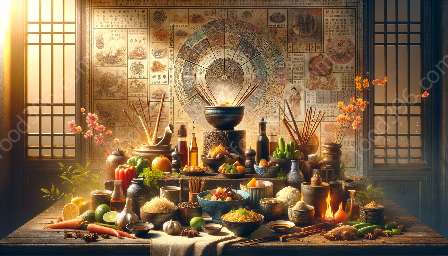Asian fusion cuisine is a testament to the rich history and diverse flavors of traditional Asian ingredients. The melding of different culinary traditions has created a culinary landscape that is both vibrant and exciting. Let's delve into the roots of Asian fusion cuisine, its historical significance, and the impact of traditional Asian ingredients on global culinary trends.
The History of Asian Fusion Cuisine
Asian fusion cuisine is a culinary movement that draws inspiration from the diverse food cultures of Asia, blending traditional cooking techniques and ingredients with influences from other regions of the world. The history of Asian fusion cuisine can be traced back to the ancient Silk Road, where trade routes connected Asia with Europe, Africa, and the Middle East. This exchange of goods and ideas introduced new ingredients and cooking methods to the region, leading to the gradual evolution of Asian cuisine.
During the colonial era, Asian cuisine assimilated foreign ingredients and cooking styles, resulting in the emergence of hybrid dishes that reflected the cultural exchange between Asia and the West. In the modern era, the globalization of food has further fueled the popularity of Asian fusion cuisine, with chefs and home cooks alike experimenting with innovative flavor combinations and techniques.
Traditional Asian Ingredients
Traditional Asian ingredients are at the heart of fusion cooking, contributing unique flavors, textures, and aromas to a wide range of dishes. From the pungent spices of India to the umami-rich sauces of Japan, Asian ingredients such as soy sauce, ginger, lemongrass, and rice vinegar form the building blocks of fusion cuisine.
One of the most iconic Asian ingredients is soy sauce, which originated in China and spread throughout Asia, becoming a staple in many dishes. Its savory, salty flavor adds depth to marinades, stir-fries, and dipping sauces. Similarly, the floral and citrusy aroma of lemongrass, commonly used in Southeast Asian cuisine, lends a refreshing zest to curries, soups, and marinades.
Ginger, with its warm and spicy notes, is another essential ingredient in Asian cooking. From its use in teas and broths to its inclusion in stir-fries and condiments, ginger imparts a distinct kick to dishes, balancing out the flavors and adding a touch of heat. Rice vinegar, a key component in sushi rice seasoning and pickling liquids, provides a delicate acidity that enhances the taste of salads, dressings, and glazes.
The use of traditional Asian ingredients in fusion cooking extends beyond seasoning and flavoring. Staples like rice, noodles, and tofu serve as versatile bases for creative interpretations, lending themselves to cross-cultural fusions that transcend traditional boundaries.
Impact on Global Culinary Trends
The incorporation of traditional Asian ingredients in fusion cooking has had a significant impact on global culinary trends, inspiring a newfound appreciation for diverse flavors and culinary traditions. The popularity of dishes such as sushi burritos, Korean barbecue tacos, and Thai-inspired burgers reflects the growing demand for innovative and cross-cultural dining experiences.
Furthermore, the fusion of traditional Asian ingredients with global influences has redefined the way people perceive and engage with food. It has sparked a wider conversation about cultural exchange, authenticity, and creativity in the kitchen, encouraging individuals to explore, experiment, and celebrate the multicultural tapestry of flavors.
As Asian fusion cuisine continues to evolve, it serves as a bridge between tradition and innovation, paying homage to the timeless allure of traditional Asian ingredients while embracing modern culinary expression. The seamless integration of diverse culinary influences has not only enriched the global food scene but has also fostered a deeper understanding and appreciation of Asian culinary heritage.

